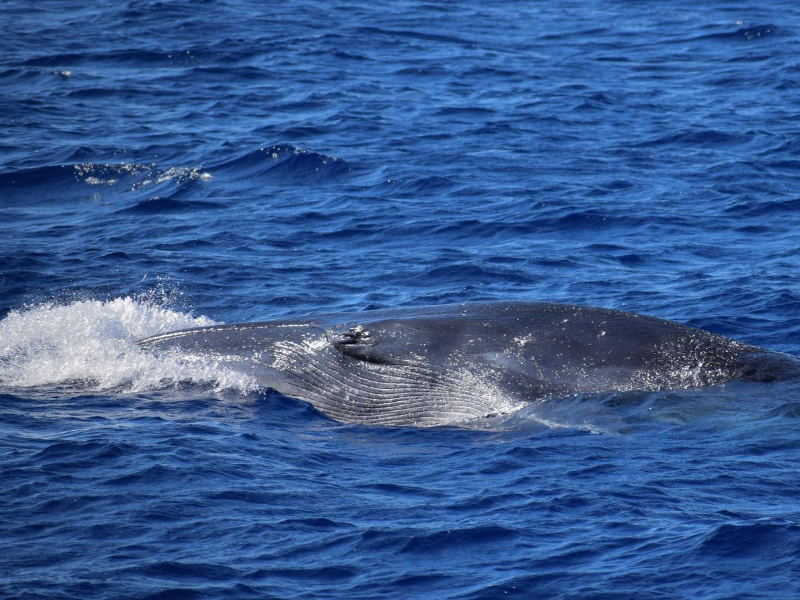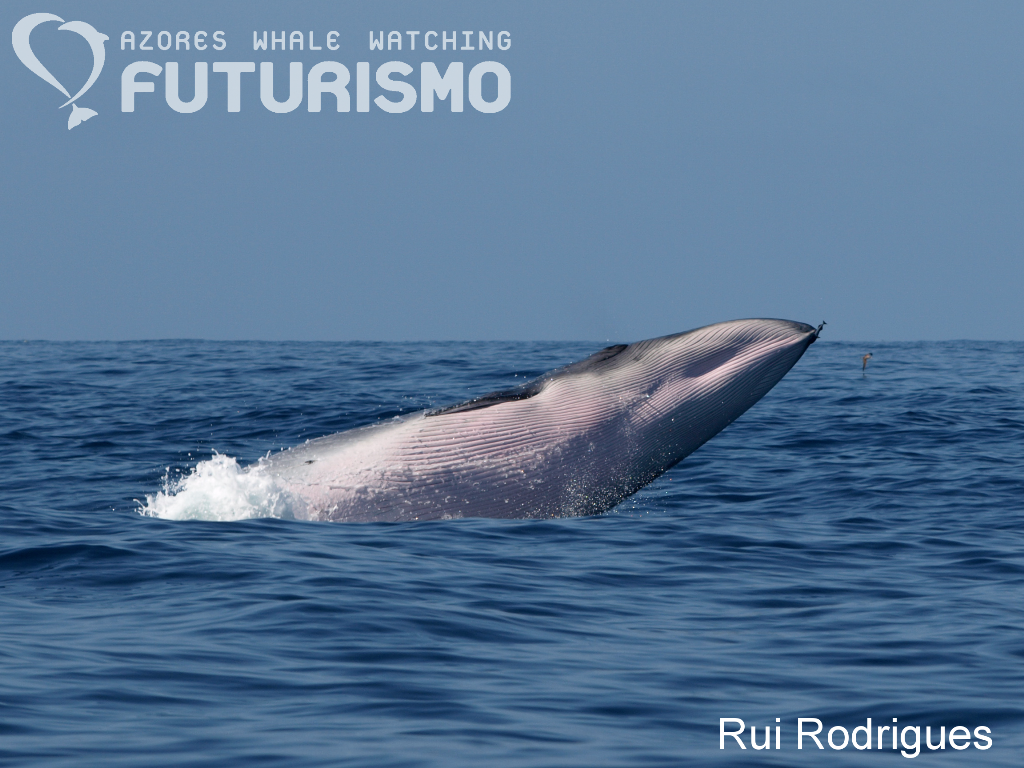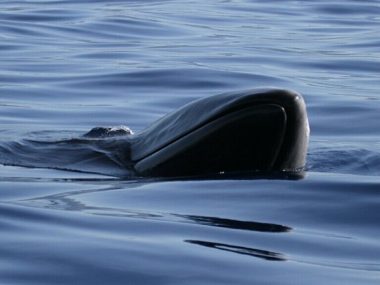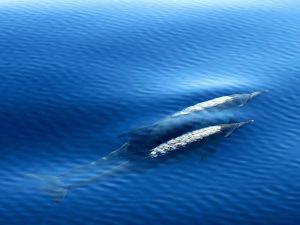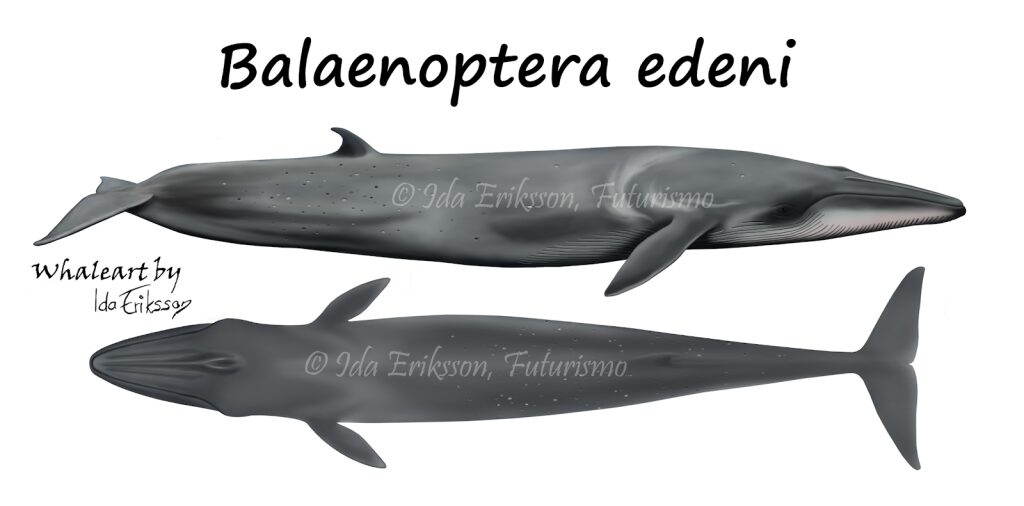
The Bryde’s whale (pronounced broo-dess) is also known as the tropical whale because it is
the only baleen whale species that lives year round in warm tropical waters. They are mostly
encountered waters between 16-20°C, in both offshore and coastal areas, and highly productivity
and biological abundance waters (Carwardine, 2020; Steiner et al., 2008). At sea, they can easily be
confused with other baleen whales, particularly sei whales. The distinguishing feature of the Bryde’s
whale is a set of three parallel ridges on top of the head, in comparison to the one ridge in sei
whales. Of the two species, Bryde’s whales may also be more active on the surface, often with
irregular breathing patterns and frequent changes in direction.
Bryde’s whales were only confirmed in the Azores for the first time in 2004. Before this they
may have been misidentified and could be more common here than previously thought. Recently
there have been regular confirmed sightings in the area. In the Azores, it is expected to sight them in
summer, between June and August (Maciel et al., 2018), the Azores seems to be as far north as this
species swim.
Bryde’s whale facts:
- Length:
Male: 15 m;
Female: 17 m;
Calf: 4 m; - Weight:
Female: 40,000 kg;
Calf: 650 kg; - Global population:
Unknown , but a global estimation could be 50.000-100.000 - Status:
Least Concern (IUCN List) - Diet:
mostly opportunistic feeders; inshore animals primarily feed on small schooling pelagic fish (including sardines, mackerel, anchovy and herring), offshore animals seem to feed primarily on krill, cephalopods such as squid and octopus, pelagic crustaceans and other zooplankton. Their prey preference depends on the prey availability and its abundance changes (Carwardine, 2020; Still et al., 2019). - Baleen:
Unknown - Longevity:
40 years - Reproduction:
Year-round - Sexual Maturity:
6-11 years - Gestation:
10 – 12 months - Nursing:
12 months
In other languages
Portuguese: Baleia-de-Bryde
Spanish: Ballena de Bryde
French: Roqual de Bryde
Italian: Balenottera di Eden
German: Brydewal, Tropischer Wal
Dutch: Brydes vinvis
Swedish: Brydes fenval
Norwegian: Brydehval, sardinhval
Danish: Brydehval
Finnish: Tropiikinvalas
Polish: Pletwal równikowy
Russian: Kit brayda
References
Carwardine M., (2020). Handbook of Whales, Dolphins and Porpoises. Bloomsbury Wildlife, 106-109;
Cooke, J.G. & Brownell Jr., R.L. (2018). Balaenoptera edeni . The IUCN Red List of Threatened Species 2018: e.T2476A50349178;
https://dx.doi.org/10.2305/IUCN.UK.2018-1.RLTS.T2476A50349178.en;
Jefferson, T., M. Webber, R. Pitman. 2008. Marine Mammals of the World: a Comprehensive Guide to their Identification . London, England: Elsevier Publications;
Maciel, I. S., Tardin, R. H., & Simão, S. M. (2018). Occurrence and habitat use of Bryde’s whales (Balaenoptera edeni) in the Cabo Frio region, South-eastern Brazil. Journal of the Marine Biological Association of the United Kingdom , 98 (5), 1081-1086;
NOAA Fisheries. (2020). Bryde’s Whale . [online] Available at: https://www.fisheries.noaa.gov/species/brydes-whale [Accessed 29 Feb. 2020];
Steiner, L., Silva, M. A., Zereba, J., & Leal, M. J. (2008). Bryde’s whales, Balaenoptera edeni, observed in the Azores: a new species record for the region. Marine Biodiversity Records , 1;
Still, R., Harrop, H., Stenton, T., & Dias, L. (2019). Europe’s Sea Mammals Including the Azores, Madeira, the Canary Islands and Cape Verde: A field guide to the whales, dolphins, porpoises and seals. Princeton, New Jersey; Woodstock, Oxfordshire: Princeton University Press doi:10.2307/j.ctv941t9c.

